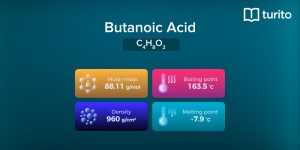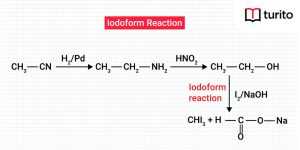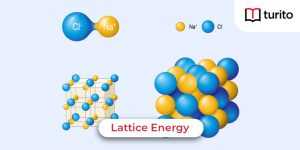Ethanoic Acid
Ethanoic acid (also known as acetic acid) is a component of the carboxylic acid group. The primary distinction between acetic acid and ethanoic acid is that acetic acid is the common name for the identical product. In contrast, It is the chemical name assigned by IUPAC. The terms ethanoic acid and acetic acid refer to the same chemical. It is a chemical compound. The ethanoic acid formula is CH3COOH.
Vinegar is a popular household product used in kitchens that is a solution of 5-8 percent Ethanoic Acid in water. Because ethanoic acid freezes throughout the winter and takes on a glacier-like look, it is also known as glacial ethanoic acid and is a frequent experimental compound. It is responsible for vinegar’s pungent aroma and tartness.
Ethanoic Acid Structure
The second most basic carboxylic acid is ethanol. The following is ethanoic acid’s structure:
- The formula for ethanoic acid is CH3 The structural formula for ethanoic acid will be the same as the chemical formula.
- The structure comprises a methyl (-CH3) group linked to a carboxylic acid substituent group (-COOH).
- It is sp2 hybridized. Ethanoic acid often appears as a dimer in liquid and gaseous states due to molecular bonds involving hydrogen atoms.
- At temperatures of 120°C°, dimers are detected in their vapor form.
- When dimers are found in the liquid form, they can be identified in a dilute solution.
The structural formula of ethanoic acid is as follows:

Structural Formula of Ethanoic Acid
Physical Properties of Ethanoic Acid
Some of the most prominent physical properties of ethanoic acid are as follows:
- Ethanoic acid has a sour taste and a distinct pungent vinegar smell.
- It is a clear, translucent liquid.
- It reaches a boiling point of 391 degrees Kelvin.
- The liquid viscosity is 1.049 g/cm3.
- It can be combined with water, ethanol, or ether in any proportion.
- It disperses in liquid as a result of heat generation and volume reduction.
- It is extremely toxic and creates burns when it makes contact with it.
- It comprises sulfate, salt, and several other chemicals.
- It has a high boiling point of 118°C and a melting temperature of 16°C.
- A single hydrogen bond source and two hydrogen bond receiver atoms are found in this compound.
Chemical Properties of Ethanoic Acid
The following are some of the most notable chemical features of ethanoic acid:
Esterification Reaction
Whenever a carboxylic acid combines with any ethanol, a new family of chemicals known as esters is formed. The reaction is the process that results in the creation of esters. The following is an example of how Ethanoic Acid (a carboxylic acid) combines with Ethanol (alcohol) to generate an ester:
CH3COOH + CH3CH2OH → CH3COOCH2CH3
This reaction gives rise to a new family of chemical molecules known as esters, which have a distinct sweet odor and can be readily detected. Esters are extensively employed as artificial flavor enhancers in the food sector and as perfumery ingredients. Apart from that, one of the most common uses of esters is in soaps.
Saponification Reaction
The preparation of soaps is referred to as the saponification reaction. This reaction often takes place with esters of greater molar mass. This reaction is best described in general terms as follows:
RCOOR’ + NaOH → RCOO–Na+ + R’OH
The end product formed is soap, along with the release of alcohol.
- Because of the carboxyl functional group, ethanoic acid sheds one hydrogen atom. This results in a significant dissociation of the molecule, as seen by the reaction:
CH3COOH ⇌ CH3COO⁻ + H⁺
The acidic nature of ethanol is caused by the proton discharge indicated in the equilibrium mechanism above.
- The pH of ethanoic acid is 3, indicating that it is a weak acid which does not completely dissolve in water.
Ethanoic Acid Reactions
The following are some of the most common ethanoic acid reactions:
- It is present in nearly all carboxylic acid interactions. The equations reveal that when heated above 440°C, ethanoic acid disintegrates to generate either water and ethanone or methane and carbon dioxide.
CH3COOH + Heat → CO2 + CH4
CH3COOH + Heat → H2C=C=O + H2O
- Reaction with a base: It is a weak acid with a formula of CH3COOH. It reacts with bases to generate salt and water, like most acids. In the example given below, ethanoic acid reacts with NaOH (a base) to generate sodium ethanoate (a salt) and H2O:
CH3COOH + NaOH → CH3COONa + H2O
Sodium ethanoate has many industrial uses, including ozonation of sulfuric acid in textile manufacturing, food preservation, a gentle flavor enhancer food industry, and a stabilizing agent along with Ethanoic acid to keep the constant pH of a substance.
- Some metals, such as magnesium, ferrous, and zinc, erode when exposed to ethanoic acid. As a consequence, acetate salts are produced. The equation demonstrates that magnesium acetate and hydrogen are generated when magnesium reacts with ethanoic acid.
2CH3COOH + Mg → Mg(CH3COO)2 (magnesium acetate) + H2
2Ca + 2CH3COOH——-> (CH3COO)₂Ca (calcium acetate) +H2
- Reaction with alkalis: It interacts with alkalis to generate acetate salts, as shown in the equation.
CH3COOH + KOH → CH3COOK + H2O
- Reaction with Carbonates: Acetate salts, H2O, and CO2 are the products of the interaction of ethanoic acid with carbonates or bicarbonates.
2CH3COOH + Na2CO3 (sodium carbonate) → 2CH3COONa + CO2 + H2O
CH3COOH + NaHCO3 (sodium bicarbonate)→CH3COOHNa + CO2 + H2O
The most widely known Applications of Ethanoic Acid
It has a variety of applications. As a result, the acid is utilized in various applications, including as a food preservative (vinegar). Some of the most common and prominent applications are as follows:
Application in Industry
Acetic acid is used to produce chemicals in a variety of industrial processes. It is also used as a chemical reagent to produce a variety of chemicals such as acetone, ethylene oxide, ester, vinegar, and others. It may even be used for crystallization, making it useful for organic compound filtration.
Utilization in the Food Industry
Ethanoic acid’s structural formula is the same as vinegar, a common ingredient in the food and beverage industry. Acetic acid is most widely used in the food sector in industrial preservation procedures and sauces such as ketchup, mustard, and mayonnaise. It also adds taste to a variety of foods, including vegetables. Moreover, vinegar may interact with basic substances such as baking soda, producing a gas that aids in raising bread items.
At-Home Applications
A weak mixture of acetic acid is widely used as vinegar at home. As we all know, vinegar is commonly used in the home for cleaning, laundry, cooking, and other duties. Farmers use acetic acid on cow feed to reduce bacterial and fungal growth.
Application in Medicine
Acetic acid has several therapeutic applications. Its primary application is as an antibiotic against pathogens, including streptococci, pseudomonas, staphylococci, and enterococci. Acetic acid is frequently used to clean the bladders of persons who use foley catheters to avoid blockage and illness.
Acetic acid is extremely effective against skin infections caused by Pseudomonas bacteria that have gained antibiotic resistance. It is also very useful as a cervical carcinoma diagnostic tool. When the cervix is subjected to acetic acid, the examination is considered effective if certain areas turn white. It is also used in chromoendoscopy to detect gastric cancer in its early phases.
Conclusion
Ethanoic acid has a structural formula of CH3COOH, the simplest carboxylic acid after methanoic acid, and its substituent group is methyl. It is an important chemical reagent and industrial chemical primarily used in producing synthetic fibers and fabrics, polyvinyl acetate for wood glue, and ethyl cellulose for film stock. Distilled acetic acid is commonly used in households as a sanitizing solution to help eliminate limescale from steel domestic items.
Acetic acid is controlled in the food industry as a condiment and acidity modifier. The acetyl group, formed from acetic acid, is required by all living things in biology. When coupled to coenzyme A, it is required to produce fatty acids and carbohydrates.
Frequently Asked Questions
Q1. What happens when ethanoic acid reacts with a base?
Despite being weak, ethanoic acid interacts with any base to generate one molecule of salt and one molecule of water. Ethanoic acid, for instance, interacts with sodium hydroxide to generate sodium ethanoate and H2O (water).
Q2. How is ethanoic acid manufactured?
Carbonylation of methanol is a typical method for producing ethanoic acid. Methanol combines with carbon monoxide, with metal carbonyl serving as a catalyst, to create ethanoic or acetic acid.
CH3OH (methanol) + HI (hydrogen iodide) → CH3I (methyl iodide intermediate) + H2O
CO (carbon monoxide) + CH3I → CH3COI (acetyl iodide)
H2O+CH3COI → CH3COOH (acetic acid) + HI
Q3. What is soap’s cleaning action?
Water cannot moisten oily or greasy materials. However, the hydrocarbon residue R (RCOO-) of the soap anion may.
Because of the accumulation of grit, grease, or viscous substances on a filthy fabric, the non-polar component R (hydrophobic) of the RCOO- ion dissolves. This occurs as impure polar particulates of grease or dirt get trapped within the micelle structure. The micelles that carry the dirt or grease particulates are washed when the cloth is cleansed with water.

Relevant Articles
Butanoic Acid – Structure, Properties, Uses
Butanoic Acid The carboxylic acid, butanoic acid, has the structural …
Butanoic Acid – Structure, Properties, Uses Read More »
Read More >>What is Iodoform? Characteristics and Uses
Iodoform The formula for Iodoform is CHI3. It is biotic …
What is Iodoform? Characteristics and Uses Read More »
Read More >>Lattice Energy – Explanation, Factors & Formulas
Lattice Energy Lattice energy evaluates the intensity of the ionic …
Lattice Energy – Explanation, Factors & Formulas Read More »
Read More >>Lead Acetate – Definition, Properties, Uses
Lead Acetate Have you ever licked lipstick when you sketch …
Lead Acetate – Definition, Properties, Uses Read More »
Read More >>




















Comments: